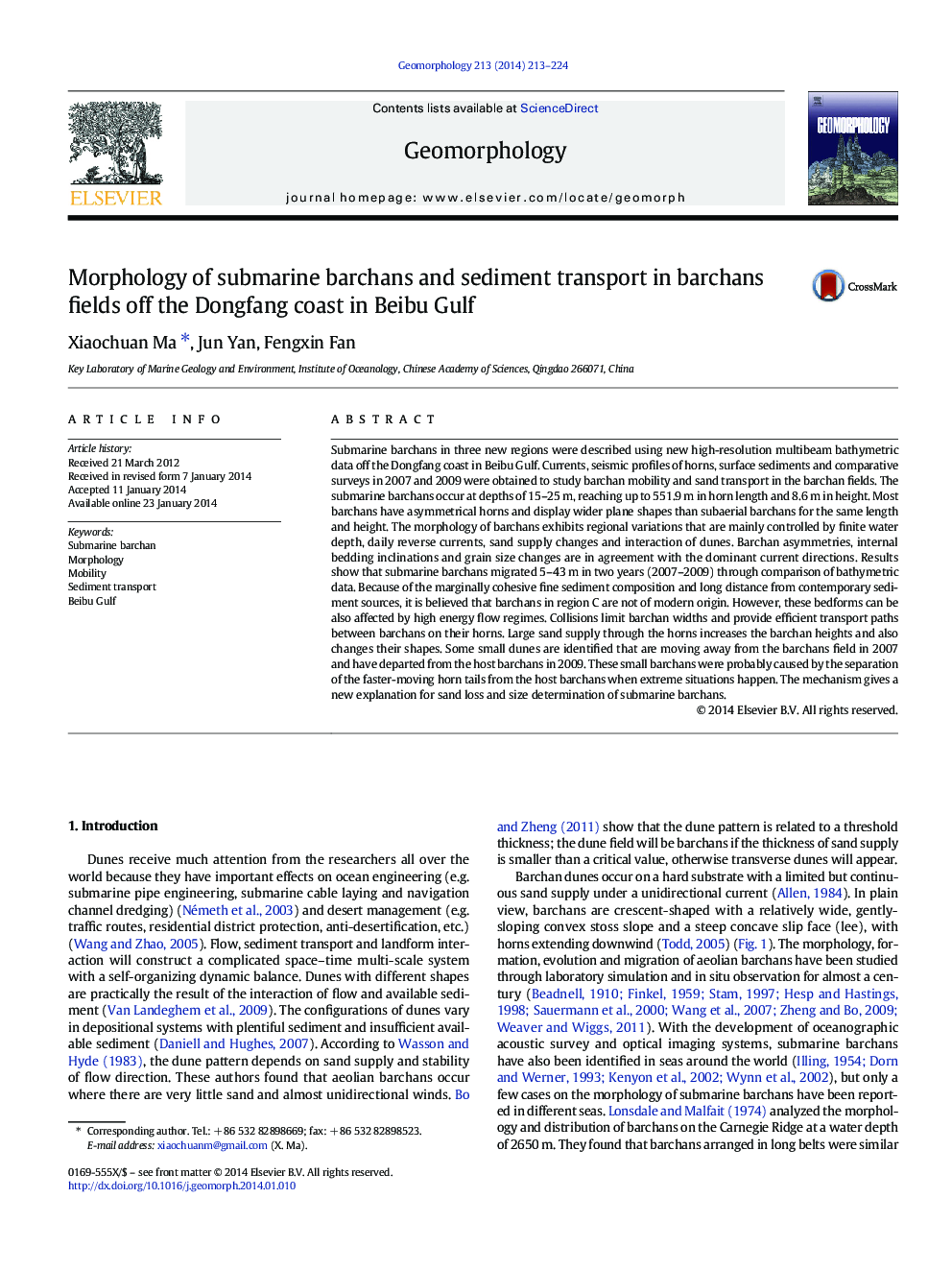| کد مقاله | کد نشریه | سال انتشار | مقاله انگلیسی | نسخه تمام متن |
|---|---|---|---|---|
| 6432507 | 1635436 | 2014 | 12 صفحه PDF | دانلود رایگان |
- This study focused on regional variations of submarine barchan morphology.
- Submarine barchans displayed a wider shape than subaerial barchans.
- Collisions provided efficient transport paths between barchans on their horns.
- Tails breaking apart from the host body formed embryos of new barchans.
- Regional morphological variations were attributed to influences of multi-factors.
Submarine barchans in three new regions were described using new high-resolution multibeam bathymetric data off the Dongfang coast in Beibu Gulf. Currents, seismic profiles of horns, surface sediments and comparative surveys in 2007 and 2009 were obtained to study barchan mobility and sand transport in the barchan fields. The submarine barchans occur at depths of 15-25Â m, reaching up to 551.9Â m in horn length and 8.6Â m in height. Most barchans have asymmetrical horns and display wider plane shapes than subaerial barchans for the same length and height. The morphology of barchans exhibits regional variations that are mainly controlled by finite water depth, daily reverse currents, sand supply changes and interaction of dunes. Barchan asymmetries, internal bedding inclinations and grain size changes are in agreement with the dominant current directions. Results show that submarine barchans migrated 5-43Â m in two years (2007-2009) through comparison of bathymetric data. Because of the marginally cohesive fine sediment composition and long distance from contemporary sediment sources, it is believed that barchans in region C are not of modern origin. However, these bedforms can be also affected by high energy flow regimes. Collisions limit barchan widths and provide efficient transport paths between barchans on their horns. Large sand supply through the horns increases the barchan heights and also changes their shapes. Some small dunes are identified that are moving away from the barchans field in 2007 and have departed from the host barchans in 2009. These small barchans were probably caused by the separation of the faster-moving horn tails from the host barchans when extreme situations happen. The mechanism gives a new explanation for sand loss and size determination of submarine barchans.
Journal: Geomorphology - Volume 213, 15 May 2014, Pages 213-224
